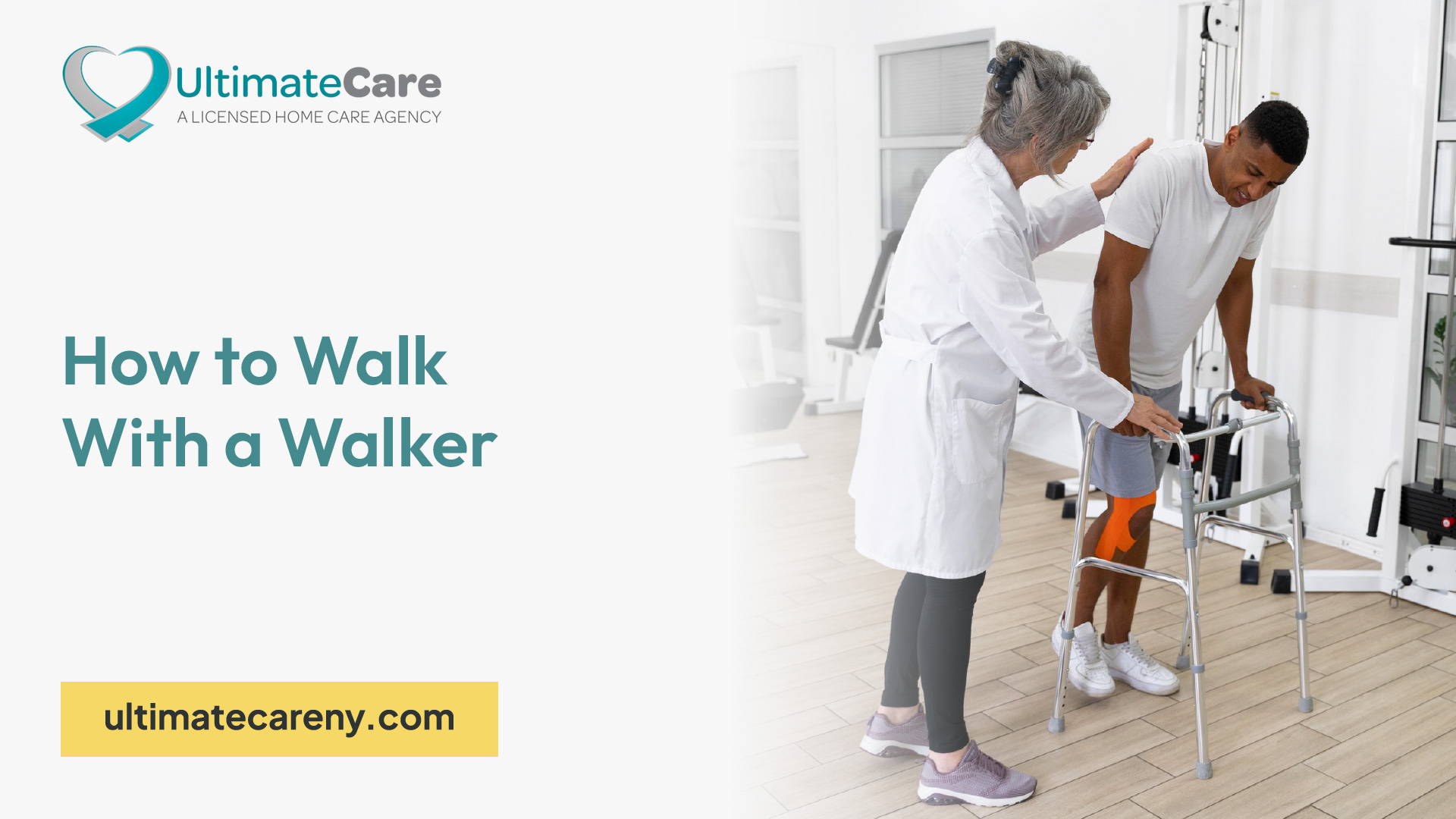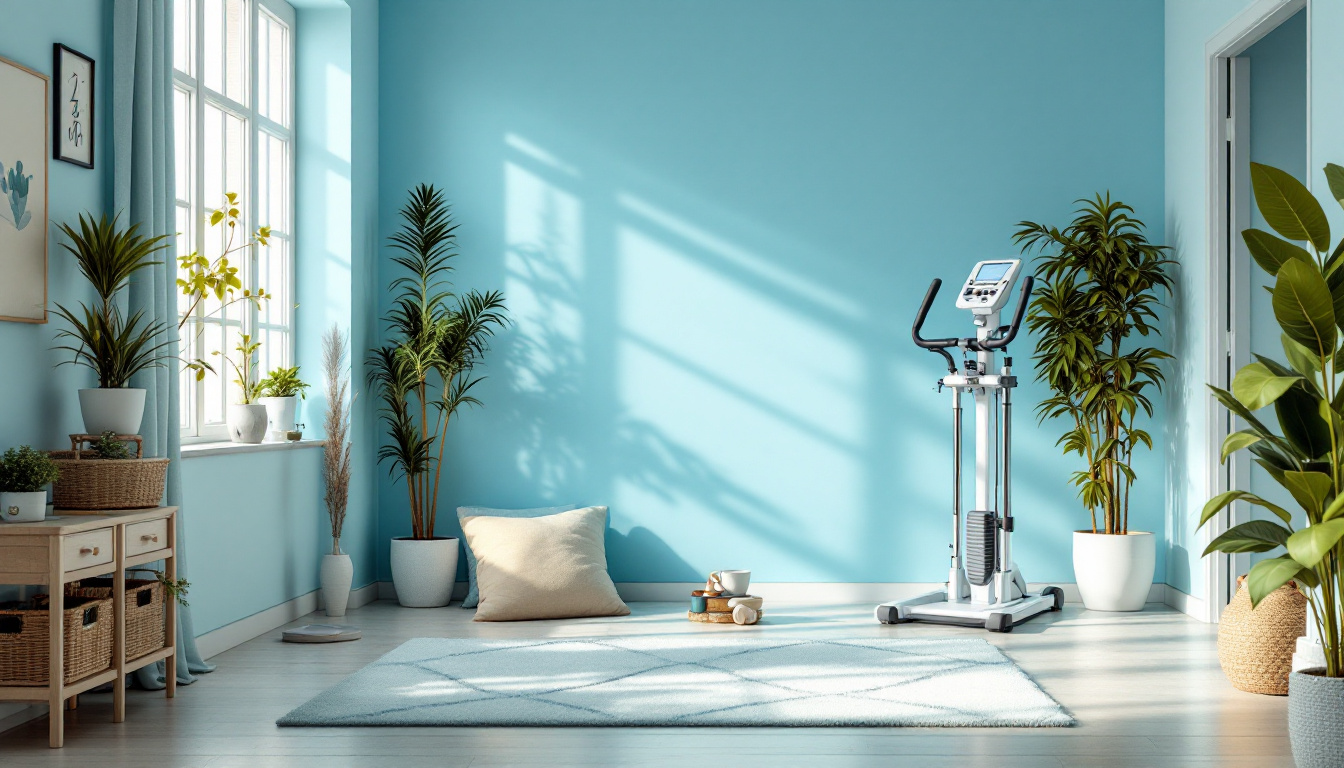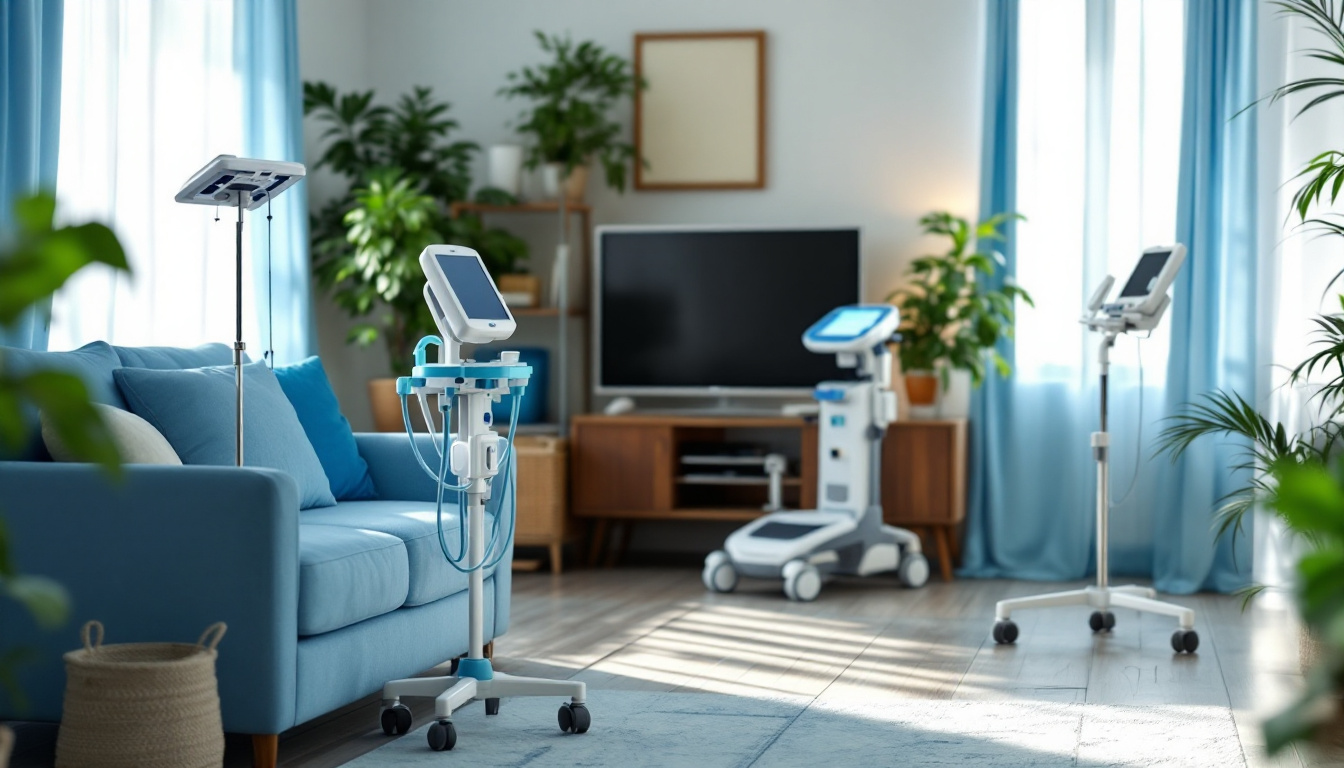How to Walk With a Walker
Master the art of walking with a walker! Discover proper techniques, safety tips, and common mistakes to avoid.
The information provided in this article is for educational purposes only. If you have medical questions or concerns, please contact a qualified health care professional.
Before beginning any new exercise program, it's essential to seek advice from your healthcare provider to ensure it's safe and appropriate for your individual health condition and fitness level.
Using a Walker for Mobility
For individuals with mobility challenges due to age, injury, or medical conditions, using a walker can provide essential support and stability, allowing them to regain independence and confidence [1]. In this section, we will explore the benefits of using a walker and discuss how to choose the right type of walker for optimal support and mobility.

Benefits of Using a Walker
Using a walker offers numerous benefits for individuals who require assistance with walking. Some of the key advantages include:
- Enhanced stability: A walker provides a stable base of support, reducing the risk of falls and increasing overall stability while walking.
- Increased mobility: By utilizing a walker, individuals can maintain or regain their ability to move around independently, which can improve their quality of life.
- Improved confidence: The added support of a walker can boost confidence and reduce anxiety related to mobility challenges.
- Reduced strain: With the help of a walker, individuals can distribute their weight more evenly, reducing strain on joints and muscles.
- Energy conservation: By allowing individuals to rely on the walker for support, walking becomes less physically demanding, conserving energy for other activities.
Choosing the Right Type of Walker
Selecting the appropriate type of walker is crucial for optimal support and mobility. Consulting with a healthcare professional is essential to determine the most suitable walker based on specific conditions and needs. Factors to consider include:
- Physical ability: Assessing the individual's weight-bearing capacity, balance, and strength is essential in determining the type of walker that will provide the necessary support.
- Environment: Consider the surroundings where the walker will be used. Factors such as narrow doorways, uneven surfaces, or stairs may influence the choice of walker.
- Social support system: Evaluate the availability of a caregiver or assistance from others in the individual's daily life. This can impact the type of walker chosen, as some walkers require more caregiver assistance than others.
There are different types of walkers available, including:
- Standard walker without wheels: This type of walker provides maximum stability but requires lifting and moving the walker with each step. It is suitable for individuals who require greater support and stability.
- Walkers with wheels: These walkers have two front wheels and two back legs with glides or rubber tips. They offer improved maneuverability and require less lifting. They are suitable for individuals with moderate stability and mobility.
- Knee walker: A knee walker, also known as a knee scooter, is a wheeled device that allows individuals to rest their injured leg while propelling themselves with their other leg. It is ideal for individuals with a lower extremity injury or surgery that requires non-weight bearing.
Choosing the right type of walker involves considering factors beyond just physical ability. It's important to assess the environment, social support system, and individual preferences to ensure the walker meets the specific needs and enhances mobility [2]. Consulting with a healthcare professional can provide valuable guidance and ensure the selection of the most appropriate walker for optimal support and mobility.
Proper Techniques for Walking with a Walker
When using a walker for mobility, it's essential to learn and practice proper techniques to ensure stability, maintain posture and balance, and take controlled steps. By following these techniques, individuals can walk safely and confidently with a walker.
Transitioning from Sitting to Standing
Transitioning from a sitting to a standing position with a walker requires careful execution to prevent falls and maintain stability. The following steps can help facilitate a smooth transition:
- Position the walker in front of you, ensuring it is stable and its brakes are engaged.
- Place your hands on the hand grips of the walker with a firm grip.
- Lean forward slightly, pushing up through your legs and using your arms on the walker for support.
- Engage your leg muscles and gradually stand up, maintaining a straight back and avoiding hunching over.
- Take a moment to ensure your balance before taking your first step.
Maintaining Posture and Balance
Proper posture and balance are crucial while walking with a walker. Follow these guidelines to maintain optimal posture:
- Stand up straight and align your body with the walker.
- Hold onto the hand grips of the walker with your arms slightly bent, allowing for a comfortable and secure grip.
- Avoid hunching over or leaning too far forward. Keep your back straight and shoulders relaxed.
- Keep your head up and look straight ahead, rather than looking down at your feet.
- Engage your core muscles to help maintain stability and balance.
Taking Controlled Steps
Taking controlled and deliberate steps is essential for safe and effective walker use. Follow these steps to ensure controlled movement:
- Start by moving the walker forward a short distance.
- Step forward with the weaker or injured leg first, placing it slightly ahead of the walker's legs.
- Shift your weight onto the forward leg while keeping a firm grip on the walker.
- Bring the stronger leg forward and place it slightly ahead of the weaker leg.
- Repeat the process, taking small steps with the walker and maintaining a steady pace.
- Avoid taking long strides or overreaching with your steps, as this can compromise your balance and stability.
It's important to note that each individual's needs may vary. Seeking guidance from a physical therapist or healthcare professional can provide personalized assistance and ensure that you master the correct techniques for walking with a walker. Their expertise can help prevent falls and maximize the benefits of using a walker for mobility.
Maneuvering with a Walker
Navigating different surfaces and terrains, making turns, and handling stairs with assistance are essential skills to master for maneuvering with a walker effectively and safely.
Navigating Different Surfaces and Terrains
When using a walker, it's important to be mindful of the surfaces and terrains you encounter. Here are some tips for navigating different surfaces:
- Indoor Surfaces: Walkers generally perform well on indoor surfaces such as hardwood floors, tiles, and carpets. Ensure that the wheels or rubber tips on the walker legs are clean and in good condition for optimal traction.
- Outdoor Surfaces: When moving outdoors, walkers may face challenges on uneven surfaces, gravel, or grass. Take small, controlled steps and pay attention to your balance. If possible, choose smoother paths and avoid uneven terrain to reduce the risk of tripping or falling.
- Curbs and Ramps: Approach curbs and ramps with caution. To navigate a curb, position the walker close to the edge, ensure the brakes are engaged, and use your upper body strength to lift the walker. Take small steps to maintain balance and control as you transition onto the curb or ramp.
Making Turns with a Walker
When turning while using a walker, it's important to follow proper techniques to maintain stability and prevent accidents. Here are some tips for making turns:
- Wide Arcs: To avoid tripping over the walker legs, make wide arcs when turning. This prevents the walker from getting too close to your feet and reduces the risk of entanglement.
- Avoid Excessive Twisting: While it's necessary to turn your body to change direction, avoid twisting excessively. Twisting can strain your back and affect your balance. Instead, pivot your feet and turn your body as a unit, keeping your back straight and aligned with the walker.
Handling Stairs with Assistance
When encountering stairs, it is crucial to have assistance to ensure safety. Attempting to navigate stairs with a walker alone can be extremely dangerous. Here's what you should do:
- Seek Assistance: Ask for help from a caregiver, family member, or friend to assist you in navigating stairs. They can provide support and stability as you ascend or descend.
- Proper Technique: Depending on the type of walker you have, the technique for handling stairs may vary. For a standard walker, lift and set the device about one step in front, step inside the bars, and repeat the movement. With a wheeled walker, roll the device forward before stepping into it. A rollator is pushed along without stopping.
Remember, safety should always be the top priority when using a walker. If you have any concerns or questions about maneuvering your walker on different surfaces, making turns, or handling stairs, consult with a healthcare professional or physical therapist for guidance.
Ensuring Safety with a Walker
To ensure safety while using a walker, it's essential to follow certain guidelines and take necessary precautions. This section will focus on three key aspects: wearing proper footwear, avoiding hazards and obstacles, and adjusting the walker to the correct height for optimal support and comfort.
Wearing Proper Footwear
Wearing suitable footwear is crucial for stability and balance while using a walker. Choose shoes that provide good support, have non-slip soles, and fit properly. Avoid shoes with high heels or slick bottoms that may increase the risk of slipping or tripping. Well-fitting shoes with a firm grip can enhance your confidence and minimize the chance of accidents.
Avoiding Hazards and Obstacles
When walking with a walker, it's important to be aware of your surroundings and avoid potential hazards and obstacles. Keep an eye out for uneven surfaces, loose rugs, cables, or any other objects that could cause you to trip or lose balance. Clear pathways of clutter and ensure that walkways are well-lit to enhance visibility. By maintaining a hazard-free environment, you can minimize the risk of accidents while using your walker.
Adjusting the Walker to the Correct Height
Proper adjustment of the walker's height is crucial for maintaining good posture, preventing back pain, and ensuring optimal support. When adjusting the height, follow these steps:
- Stand up straight with your arms at your sides.
- The top of the walker should align with the crease on the inside of your wrist when your arms are hanging down.
- Ensure that the adjustment mechanism is securely locked in place to prevent accidents or injuries while using the walker.
Most walkers come with multiple height adjustment settings to cater to individual needs and comfort levels. Consulting a healthcare professional or following the manufacturer's guidelines can help you determine the appropriate height for your walker. Remember, proper alignment contributes to better stability, balance, and overall safety while using the walker.
By wearing proper footwear, being mindful of hazards, and adjusting the walker to the correct height, you can enhance safety and reduce the risk of accidents while using your walker. These simple yet essential practices ensure that your mobility aid serves its purpose effectively, providing you with the support and confidence you need to move around comfortably.
Common Mistakes to Avoid with a Walker
When using a walker for mobility assistance, it's important to be aware of common mistakes that can compromise safety and hinder effectiveness. By avoiding these mistakes, individuals can make the most out of their walker and minimize the risk of accidents or injuries.
Inappropriate Fitting of the Walker
One of the most common mistakes is using a walker that is not properly fitted to the individual's height and needs. Walkers typically come with multiple height adjustment settings to cater to the individual needs and comfort levels of different users. To ensure proper fitting, follow these steps:
- Stand up straight with your arms at your sides.
- The top of the walker should line up with the crease on the inside of your wrist when your arms are hanging down.
An inappropriately fitted walker can lead to poor posture, discomfort, and difficulty maneuvering. It's important to regularly check and adjust the walker's height to ensure optimal support and stability.
Forgetting to Engage the Brakes
Another common mistake is forgetting to engage the brakes on the walker. This can pose a safety risk, as the walker may move away while the user is attempting to stand, causing falls [4]. Always remember to engage the brakes before attempting to use the walker for support. This is particularly important when sitting down or standing up from a chair or bed.
Engaging the brakes provides stability and prevents the walker from moving unexpectedly. Regularly check the brake system to ensure it is in proper working condition. If you notice any issues with the brakes, seek assistance from a healthcare professional or the manufacturer.
Using the Walker as a Wheelchair
A common misconception is using the walker as a wheelchair by sitting on the walker seat and pushing with the feet. This can be extremely dangerous, as the walker is not designed to support body weight in this manner. Using the walker as a wheelchair can cause the device to tip over, leading to serious injuries.
It's important to understand that walkers are intended for walking support and stability while in an upright position. If a wheelchair is needed for extended periods of sitting, it's advisable to use a proper wheelchair designed for that purpose.
By avoiding these common mistakes, individuals can enhance their safety and maximize the benefits of using a walker. Remember to ensure proper fitting, engage the brakes when necessary, and use the walker only as intended. Seek guidance from healthcare professionals or mobility experts for additional assistance and recommendations.
Special Considerations for Different Types of Walkers
When it comes to using a walker, it's important to consider the specific type of walker you have, as each type has its own unique features and considerations. In this section, we will explore the special considerations for using a 4-wheeled walker, adjusting the height of a walker, and using a rollator or rollator walker.
Using a 4-Wheeled Walker
A 4-wheeled walker is a popular choice for individuals who can stand on both legs and require assistance with walking. It is important to note that individuals who are non-weight-bearing, partial weight-bearing, or feather-weight bearing may require a different walking aid recommended by their healthcare provider [5].
One of the key features of a 4-wheeled walker is the hand brakes. Users need to have sufficient hand strength to effectively squeeze the brakes. This feature provides added stability and control while walking. Additionally, a 4-wheeled walker typically includes a seat, pouch or basket, and hand-operated brakes that fold down for storage or travel [5].
When using a 4-wheeled walker, it's important to maintain a straight back, look forward, and avoid looking at your feet. This helps to improve stability and posture while walking [5].
Adjusting the Height of a Walker
Proper adjustment of the height of a walker is essential for maintaining good posture while walking and reducing the risk of discomfort or pain in the neck, shoulders, and back. The handles of the walker should be adjusted to a height that allows for a slight bend in the elbows when holding onto the hand grips. This position ensures proper alignment and reduces strain on the upper body.
When adjusting the height of the walker, it's important to seek assistance if needed. Caregivers, therapists, or healthcare professionals can provide guidance on the correct height adjustment to suit your specific needs. This ensures optimal comfort and support while using the walker.
Using a Rollator or Rollator Walker
A rollator, also known as a rollator walker, is a type of walker that comes with wheels. It is equipped with hand brakes, a seat, and a storage compartment, making it a versatile and convenient option for individuals who require mobility assistance. Rollators are designed to be pushed along without stopping, providing a smoother walking experience compared to standard walkers.
Using a rollator involves similar techniques as a standard walker. It's important to maintain good posture, look forward, and avoid looking down at your feet while walking. Adjusting the height of the rollator handles is crucial for proper alignment and comfort. The handles should be set at a height that allows for a slight bend in the elbows when gripping the handles.
Rollators provide additional stability and support compared to standard walkers, thanks to their wheels. However, it's important to note that rollators may not be suitable for all individuals. Consulting with a therapist or healthcare professional can help determine if a rollator is the right choice for your specific needs.
By considering the special considerations for different types of walkers, you can ensure safe and effective use of your chosen walking aid. Adjusting the height, understanding the unique features, and seeking professional guidance when needed will help enhance mobility and provide the necessary support for your walking needs.
Tips for Safe and Effective Walker Use
To ensure safe and effective use of a walker, there are several key tips to keep in mind. By following these guidelines, individuals can maximize their mobility and minimize the risk of accidents or injuries.
Seeking Professional Guidance and Training
Seeking professional guidance and training is crucial for safe and effective walker use. Occupational therapists or physiotherapists can provide valuable training on proper walker use, ensuring individuals are using their walkers correctly and safely. This includes learning the appropriate techniques for walking, transitioning from sitting to standing, and navigating different surfaces. Professional guidance can also help individuals understand the specific features and adjustments of their walker to optimize its use. By receiving proper training, individuals can confidently and safely use their walkers [8].
Utilizing Assistive Devices for Proper Alignment
Utilizing assistive devices can contribute to proper alignment and safer walker use. For instance, a U Step walking stabilizer is designed to project a guiding laser line onto the floor, helping individuals position their feet correctly between the handlebars. This promotes safer and more controlled walking with the walker, reducing the risk of tripping or stumbling. These devices provide visual cues and reminders for individuals to maintain proper alignment, ensuring a more stable and balanced gait.
Modifying Home Environment for Walker Accessibility
Modifying the home environment is essential to maintain safe walker use. Creating a walker-friendly environment involves ensuring clear pathways, decluttering spaces, and rearranging furniture. Removing tripping hazards, such as loose rugs or cords, is crucial to prevent accidents while using the walker. Additionally, using offset expandable hinges on doorways can provide wider openings, allowing for easier navigation with a walker [4]. By modifying the home environment, individuals can enhance accessibility and create a safer space for walker mobility.
By implementing these tips for safe and effective walker use, individuals can confidently navigate their surroundings and maintain their independence. Seeking professional guidance and training, utilizing assistive devices for proper alignment, and modifying the home environment all contribute to a safer and more comfortable walking experience with a walker.
References
[1]: https://www.atpeacehealth.com/resources/mastering-the-use-of-a-walker
[2]: http://www.walker-facts.com/How-To-Use-a-Stable-Walker-Common-Mistakes.asp
[3]: https://becausemarket.com/blogs/news/walker-height-adjustment
[4]: https://www.helpmedevices.com/the-biggest-mistakes-seniors-make-when-using-a-rollator-walker/
[5]: https://myhealth.alberta.ca/Health/pages/conditions.aspx?Hwid=custom.abphysio4wheeledwalker_inst
[6]: https://www.trionic.ca/en/knowledge/28/how-do-i-determine-the-right-grip-height-of-my-rollator
[7]: https://mxp4u.com/blog/how-to-determine-proper-height-for-cane-or-walker/
[8]: https://www.homechoices.org/tips-on-how-to-use-a-walker-correctly-and-safely/



































































































